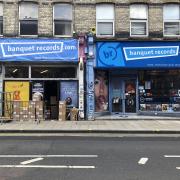
With the recent increase in contactless transactions with both credit cards and mobile applications, alongside the mass closure of local bank branches and ATM’s due to the pandemic; are we becoming a cashless society?
Recently on the 13th of March the price of Bitcoin against the US Dollar rose to $60,000, the highest it’s ever been since its creation in 2009. Since the start of the year the price of Bitcoin has nearly tripled. However, the price of Bitcoin saw a sharp decline shortly afterwards, from the 14th March onwards. This highlights its volatility since it has no intrinsic value, and the valuation depends on community involvement and investment. The problem with this is that, should a group of Bitcoin owners choose to sell a portion of their assets while the exchange rate is high, this can lead to volatility in the market which can cause the price of Bitcoin to drop. Part of the reason why Bitcoin is so valuable because of its supposed ₿21,000,000 limit. (This limit refers to the maximum number of Bitcoin that can currently exist). However, critics are sceptical as theatrically more units could be generated leading to inflation in the market, as the price of Bitcoin decreases due to value being decreased.
While many are sceptical of Bitcoin’s use for payments, Elon Musk announced that Bitcoin would be accepted to buy Tesla products. This came after his company bought $1.5 billion worth of the cryptocurrency. Experts argue that Bitcoin could be used as a store of currency like a digital version of gold, converting it to spendable currency when required. With the market cap of Bitcoin being $1.26 trillion, should the cap be reached, the price of Bitcoin could theoretically reach more than $500,000 per Bitcoin. While this scenario is a long way off, since it would take a lot more investors and miners to reach the cap. It does present an intriguing possibility for the future of cryptocurrency and investment.
Earlier this year, Visa announced that they would be partnering with BlockFi to create a Bitcoin reward credit card. While Bitcoin reward debit cards already exist, The Bitcoin Rewards Credit Card is the first of its kind. All users will be rewarded with a 1.5% return on all transaction will be automatically converted into Bitcoin and stored in a BlockFi account once a month. Since the Bitcoin is stored in a BlockFi account it is considered to be standard crypto funding, hence it can be withdrawn and used for crypto backed loans or traded. This card will be launched in the US to all states except New York due to regulations. However, there has been no announcement yet about a possible worldwide release. The card will have a $200 annual fee. Fortunately, this can easily be offset as Visa offers a $250 reward, if you spend $3000 on the card within 3 months of its activation. Whether this card will be successful in the US remains to be seen. But it leaves the door open for other companies to explore the market for Bitcoin credit cards. Yet, it could be a long way off until Bitcoin is used as a standard currency worldwide as many countries ban its use for domestic transactions.
Another development in the road towards cashless living, was the opening of Amazon’s flagship AmazonFresh shop in Ealing, earlier this month. It operates through customers scanning a code on their phone, that is generated through the AmazonFresh app. Then the bills are charged directly to their amazon account, bypassing the need for tills and cashiers. Sensors on shelves can detect when a product has been taken, and other technologies can tell which customers have taken which products, allowing them to be charged directly, and reducing the risk of possible theft. The store currently stocks around 10,000 different products that are delivered from warehouses that supply their AmazonFresh delivery service. Amazon is said to have 10 other sites in the UK that they plan to expand to in the coming years. Amazon already has 20 similar contactless stores operating in the US, which last year made $5.2 billion in profits.
One technology that could eventually be implemented in AmazonFresh stores, and other contactless transactions, is vein scanning technology. Vein scanning is seen to be one of the most secure biometrics as it is nearly impossible to replicate someone’s veins, as they change slowly with age and can vary from hand to hand. Even identical twins don’t have the same vein patterns, which goes to show how unique they are. The technology works by an infrared camera taking a picture of your hand. The haemoglobin in your blood absorb the light, therefore your veins appear dark in the photograph. The reason why vein biometrics could be pivotal for increasing cybersecurity in the future alongside being used for payments, is because they are so secure. With the increasing ease and quality of deepfakes, the insecurity of fingerprint technologies, and the ever-growing popularity of using mobile devices for payments, (which have no spending limit). Vein scanning could replace these to become the main methods of verifying large transactions. This technology isn’t new and is used across the world for security and in hospitals, however, it yet to hit the mainstream market, as it is less accessible than finger print scanners. Within a few years though, these scanners could become common place and be used similarly to how other contactless technologies work, with your unique vein pattern being linked to your bank account. Therefore, being able to securely verify everyday payments.






























